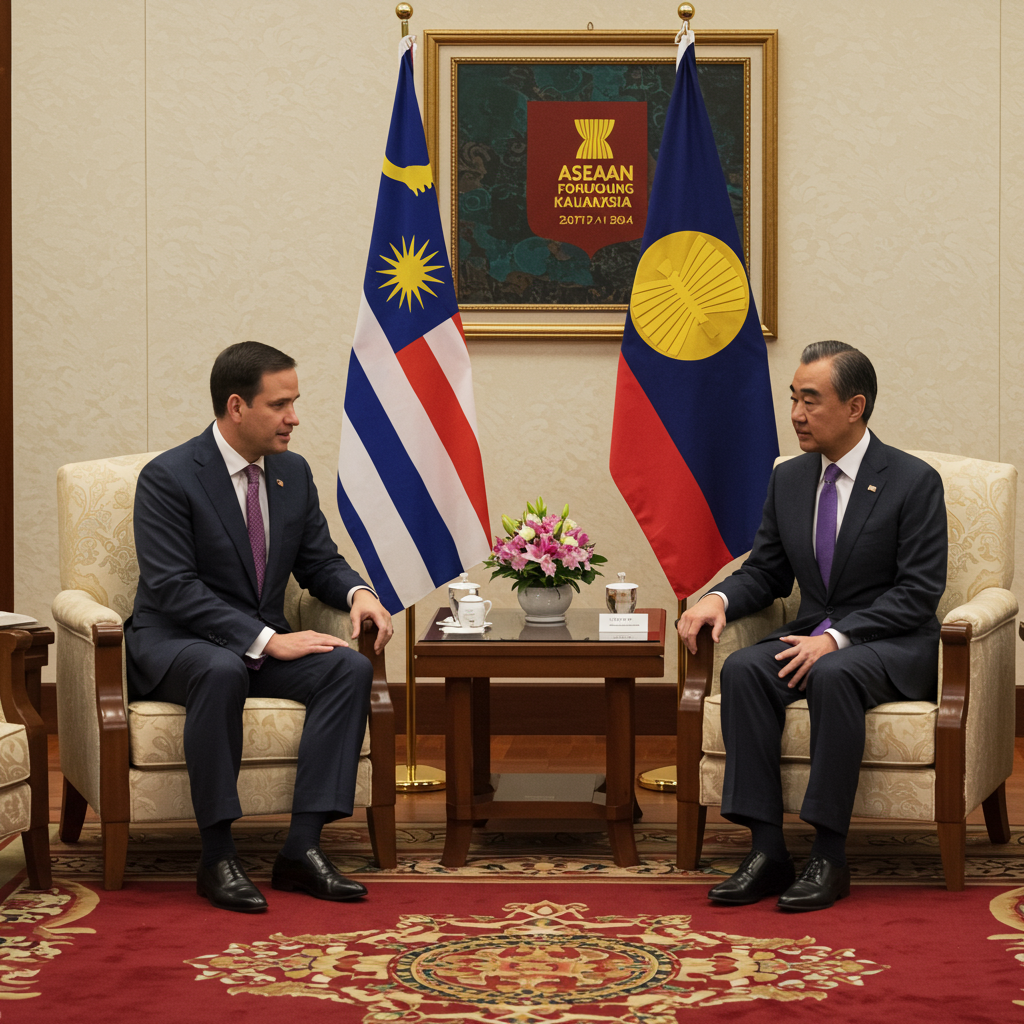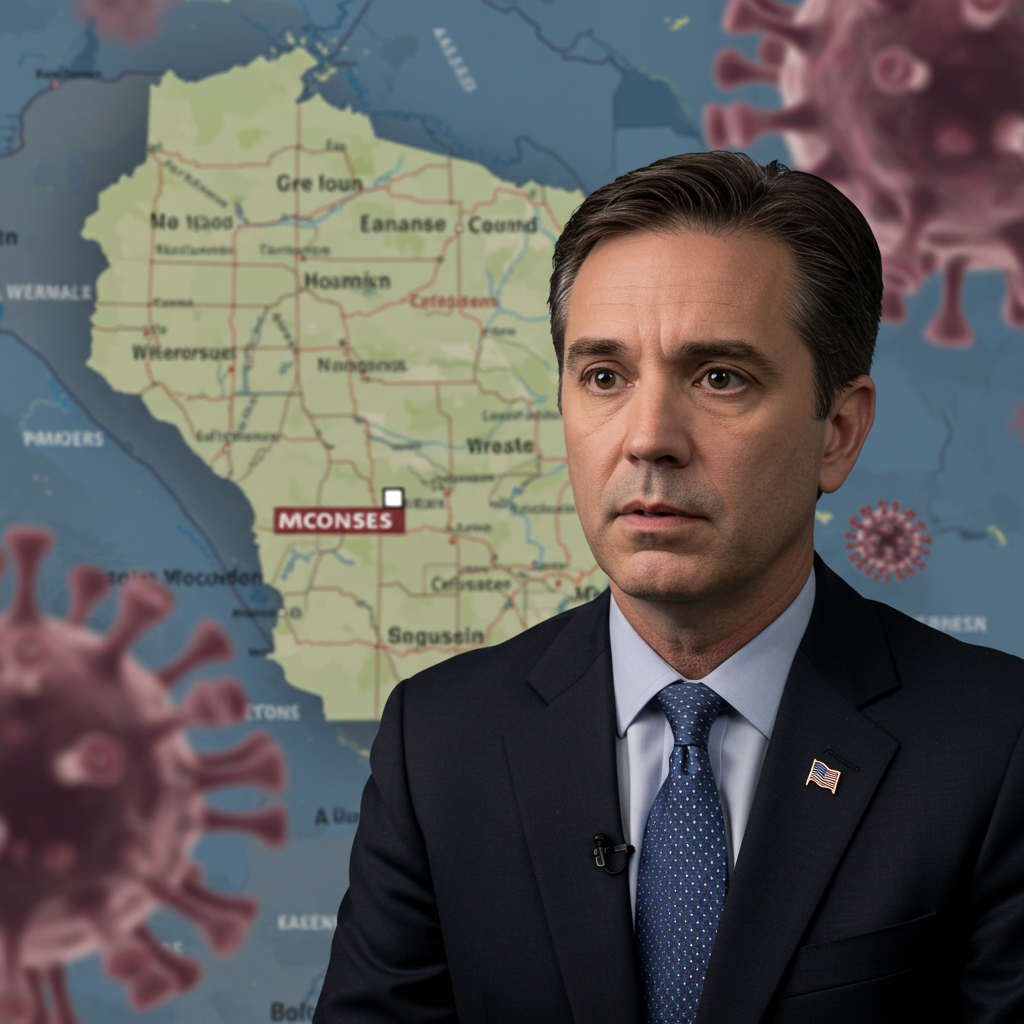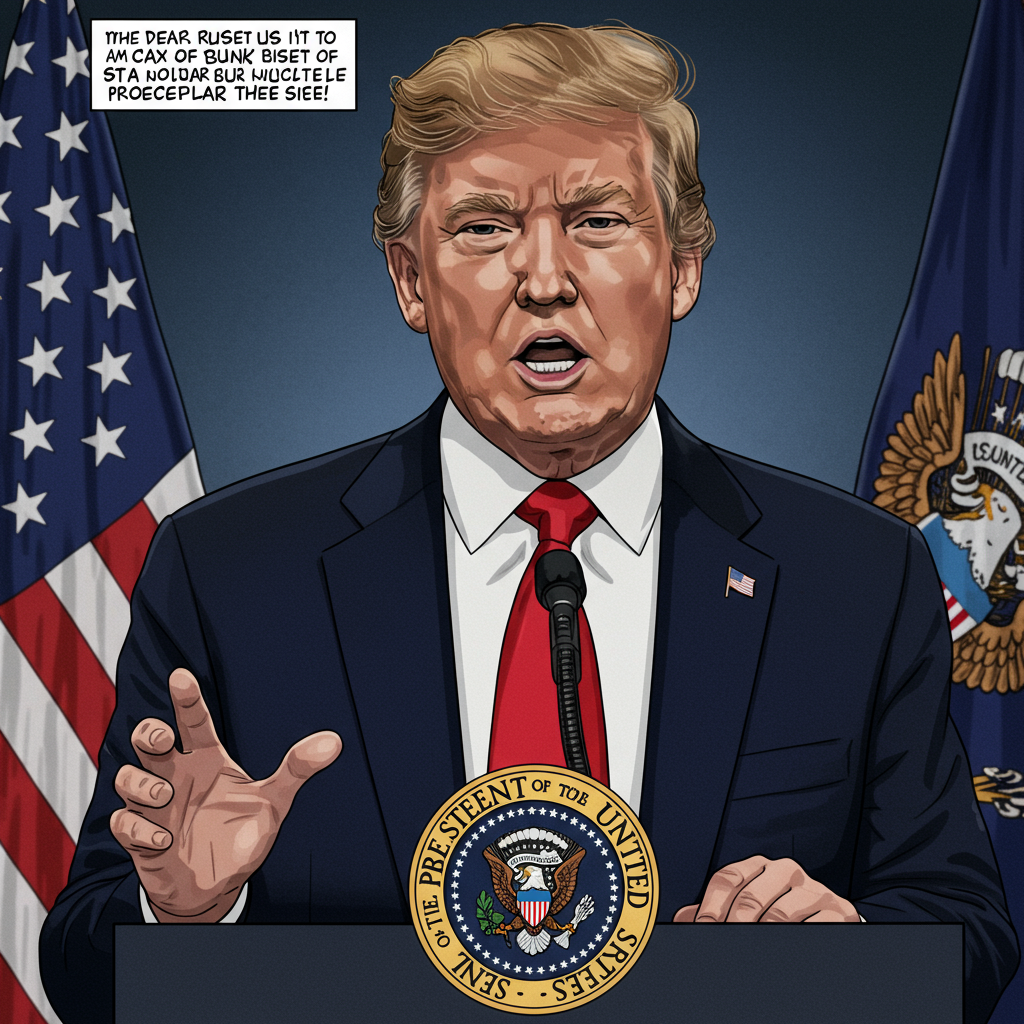In a significant diplomatic step, US Secretary of State Marco Rubio recently held his first in-person meeting with Chinese Foreign Minister Wang Yi. The high-level discussion took place on the sidelines of the Association of Southeast Asian Nations (ASEAN) forum in Kuala Lumpur, Malaysia. This direct engagement marks a crucial moment in the complex relationship between Washington and Beijing. Observers are closely watching these interactions as a possible precursor to a much-anticipated summit between US President Donald Trump and Chinese President Xi Jinping.
The meeting unfolded amidst ongoing tensions spanning trade disputes, regional security concerns, and geopolitical competition. While disagreements remain, both sides emphasized the importance of open communication channels. This direct dialogue is seen as vital for managing differences and exploring potential areas for collaboration between the two global powers.
A Historic First Meeting Unfolds
The encounter in Kuala Lumpur represented the first face-to-face session between Secretary Rubio and Foreign Minister Wang Yi since Rubio assumed his current role. Their meeting occurred on Friday, July 11, 2025, during the final day of the ASEAN conference. This setting provided a neutral ground for candid discussions away from their respective capitals.
Both top diplomats attended the regional gathering alongside foreign ministers from ASEAN members and other partner nations. The opportunity for this bilateral talk emerged from their presence at the broader summit. Neither official offered comments to reporters before sitting down for their exchange.
This inaugural meeting holds particular weight. It signals a willingness from both the Trump administration and the Chinese government to engage directly at the highest levels. Such engagements are often necessary steps before potential presidential summits can occur.
Inside the Diplomatic Exchange
Secretary Rubio characterized the approximately hour-long discussion as “very constructive” and “positive.” Despite the inherent friction points between the two large countries, Rubio highlighted the productive nature of the talks. He acknowledged that disagreements would always exist but stressed the purpose was to find common ground.
Rubio stated that their message focused on achieving “strategic stability.” They aimed to “identify areas where we can cooperate together.” Building “better communications and a working trust” was also a key objective. This emphasis suggests a strategic effort to prevent misunderstandings from escalating into conflict.
The Chinese foreign ministry echoed this sentiment in their own statement. They described the meeting as “positive, pragmatic and constructive.” Beijing also noted an agreement to “strengthen diplomatic channels and communication.” This includes dialogue “at all levels in all fields.” The Chinese side reiterated its hope for Washington to view China with an “objective, rational and pragmatic attitude.” They also called for treating China in an “equal” manner.
Setting the Stage for Potential Presidential Talks
A significant takeaway from Secretary Rubio’s remarks was his assessment of the likelihood of a Trump-Xi summit. Following his meeting with Wang Yi, Rubio indicated a “high probability” of this top-level meeting happening this year. He stated unequivocally that the “odds are high.”
Rubio further added his belief that “both sides want to see it happen.” While he could not provide a specific date for such a potential summit, his comments suggest active behind-the-scenes efforts. A meeting between the two presidents would be a major event, potentially resetting dynamics or addressing key bilateral issues directly. Such a summit would naturally follow productive lower-level diplomatic engagements like the one in Kuala Lumpur.
The prospect of a Trump-Xi summit emerges within a complex geopolitical landscape. Navigating ongoing trade frictions and competition for influence, particularly in Asia, makes presidential-level talks especially significant. The willingness of both sides to pursue this possibility, as suggested by Rubio, indicates the importance placed on high-level dialogue.
Navigating Deep Divisions: Trade, Security, and Geopolitics
The Rubio-Wang Yi meeting occurred against a backdrop of significant friction between the US and China. Trade remains a major point of contention. Tensions had seen a slight easing following a framework agreement reached during recent talks in London. US Treasury Secretary Scott Bessent was also reportedly planning further discussions with Chinese counterparts.
However, a 90-day tariff pause agreed upon in May was set to expire in August. This looming deadline created pressure. Chinese officials have been critical of US tariffs, threatening retaliation. Data from the US Census Bureau highlighted the scale of the trade imbalance, citing a $295 billion goods trade deficit with China last year.
Beyond trade, security concerns and competition for influence define the relationship. The Indo-Pacific region is a primary arena for this rivalry. The US and China compete economically and strategically across Southeast Asia. China’s expanding influence and territorial claims, particularly in the South China Sea, worry regional partners like the Philippines. The issue of Taiwan also remains a sensitive flashpoint.
The Tariff Tightrope in Southeast Asia
The Trump administration’s policy of imposing high tariffs has become a point of concern for many Asian countries. These tariffs complicate the US effort to present itself as a more reliable regional partner compared to China. The US had recently informed several nations of impending tariff rates set to take effect on August 1 unless trade deals are struck. This list included eight of the ten ASEAN countries, along with South Korea and Japan.
Chinese Foreign Minister Wang Yi has actively sought to capitalize on this discontent. He presented China as a stable economic partner in the region during the ASEAN forum. Wang Yi publicly criticized the US tariff policy. He stated that the US was “abusing tariffs, wrecking the free trade system.” He also accused the US of “disrupting the stability of the global supply chain.” Wang Yi told Cambodia’s Deputy Prime Minister that the tariffs were “an attempt to deprive all parties of their legitimate right to development.” This positioning aimed to portray China as the trustworthy alternative.
Secretary Rubio acknowledged that tariff issues were raised by his Southeast Asian counterparts. However, he stated that security issues, particularly China’s growing dominance in the Indo-Pacific, were a greater focus for many countries. Rubio pushed back against the idea that US tariffs would benefit China economically in the region. He framed the US actions as correcting “tremendous trade imbalances” that have accumulated over decades. He described these imbalances as “unfair to America and American workers.” Rubio maintained that the US was “resetting tariff levels with virtually every country in the world.” He argued these actions were not creating an “opening for anyone.” Instead, he saw it as an “opportunity to reset global trade in a way that’s fair for Americans.”
Broader Diplomatic Context: Russia and Regional Dynamics
The Rubio-Wang Yi meeting took place less than 24 hours after Secretary Rubio also met with Russian Foreign Minister Sergey Lavrov in Kuala Lumpur. Rubio’s discussion with Lavrov reportedly focused on potential avenues for jumpstarting peace talks in the Russia-Ukraine conflict. This sequence of meetings highlights the intertwined nature of global challenges and the US’s diplomatic efforts across multiple fronts.
Regarding China’s role in the Ukraine war, Rubio stated the Trump administration shares the view that “the Chinese clearly have been supportive of the Russian effort.” He added that China was assisting “as much as they can without getting caught.” This potentially controversial topic was likely part of the discussions with Wang Yi, given its significance for US foreign policy.
Both Rubio and Wang Yi engaged actively with ASEAN counterparts during the forum. Rubio aimed to reaffirm US commitment to a “free, open and secure Indo-Pacific region,” according to the State Department spokeswoman Tammy Bruce. He pointed to cooperation examples, like signing a civil-nuclear cooperation agreement with Malaysia. Meanwhile, Wang Yi focused on criticizing Trump’s threatened tariffs and promoting China’s regional standing.
China and Russia also presented a united front during the forum. Wang Yi and Lavrov held a separate meeting and issued a joint statement. They emphasized support for ASEAN’s central role in regional cooperation. They also expressed wariness of “certain major powers creating divisions and instigating confrontation in the region.” This statement serves as an implicit critique of the United States’ influence in the Indo-Pacific.
Other regional perspectives reflected the complexity. European Union foreign policy chief Kaja Kallas warned that “there are no winners in trade wars.” She suggested U.S. tariffs could weaken partners and strengthen China. Australian Foreign Minister Penny Wong echoed Rubio’s call for a balanced Indo-Pacific where “no one country should dominate.” She also stressed the continued importance of engagement with China.
What’s Next for US-China Relations?
The first in-person meeting between Marco Rubio and Wang Yi is a positive development for managing the complex US-China relationship. While it didn’t resolve fundamental disagreements, it established or reinforced high-level communication channels. This dialogue is critical for navigating sensitive issues like trade, security, and global conflicts.
The potential for a Trump-Xi summit, as suggested by Rubio, indicates a mutual desire to address challenges directly. Such a meeting would build upon the foundational talks like the one in Kuala Lumpur. However, significant hurdles remain. Trade imbalances persist, geopolitical competition in the Indo-Pacific is intensifying, and differing stances on issues like the Ukraine war complicate cooperation.
Maintaining strategic stability requires consistent, open communication. This meeting signals that despite deep-seated rivalry, both powers recognize the need to talk. Future interactions will likely focus on balancing areas of potential cooperation with firmly managing areas of significant disagreement. The outcomes of these dialogues will shape not only bilateral ties but also the broader global order.
Frequently Asked Questions
Where did the first meeting between Marco Rubio and Wang Yi take place?
The first in-person meeting between US Secretary of State Marco Rubio and Chinese Foreign Minister Wang Yi occurred in Kuala Lumpur, Malaysia. They met on the sidelines of the Association of Southeast Asian Nations (ASEAN) regional forum on Friday, July 11, 2025. Both officials were attending the broader summit, providing an opportunity for their bilateral discussion.
What did Marco Rubio say about the possibility of a Trump-Xi summit?
Following his meeting with Wang Yi, Secretary Rubio stated there is a “high probability” that US President Donald Trump and Chinese leader Xi Jinping will meet this year. He expressed his belief that the “odds are high” and that “both sides want to see it happen,” although he did not provide a specific date for the potential presidential summit.
What key issues were discussed during the Rubio-Wang Yi meeting?
While specific details weren’t fully disclosed, the meeting focused on managing differences and finding areas for cooperation between the US and China. Secretary Rubio mentioned aiming for “strategic stability,” improving communications, and building “working trust.” Key areas underlying the bilateral relationship, such as ongoing trade tensions (tariffs), geopolitical competition in the Indo-Pacific, and potentially China’s stance on the Russia-Ukraine conflict, were likely discussed or served as context for the high-stakes talks.



